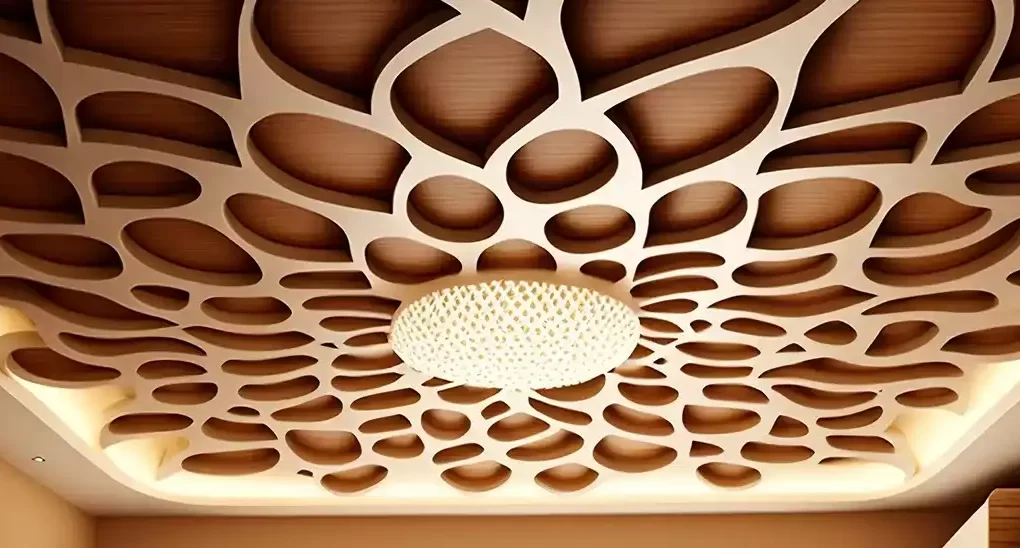The vast ceiling design can be tailored to suit any style or budget. Your choice should reflect your taste while considering functionality and space limitations. If you lean towards traditional elegance or modern minimalism, there’s something for everyone.
Evaluating room size, lighting, and decor will guide your selection process. Maintaining your ceiling is just as important as its initial design. Regular cleaning and timely updates can keep it looking fresh for years.
The best ceiling design complements your home while meeting your practical needs. Embrace creativity in this often-overlooked aspect of interior design—it might just transform an ordinary space into something extraordinary.
Types of ceilings and their purposes

Ceilings come in various types, each serving a unique purpose. The most common type is the flat ceiling, providing a simple, clean look that fits any room. Its versatility makes it popular for both residential and commercial spaces.
Vaulted ceilings create an impression of grandeur. They elevate the space vertically, making rooms feel larger and more open. This design often features exposed beams or trusses, adding character to living areas.
Coffered ceilings introduce elegance with their grid-like pattern of recessed panels. Perfect for formal dining rooms or offices, they add depth and sophistication while enhancing acoustics.
Suspended ceilings offer practical benefits like sound absorption and easy access to utilities above them. Commonly found in basements or commercial buildings, they combine functionality with aesthetic appeal.
Traditional ceiling designs
Traditional ceiling designs often evoke a sense of timeless elegance. They showcase craftsmanship that has been passed down through generations.
Coffered ceilings are a hallmark of classic architecture. Their grid-like pattern adds depth and character to any room. Wood beams can also provide warmth, creating a cosy atmosphere.
Another popular option is the tray ceiling, a recessed centre that draws the eye upward. This design trick enhances height and gives an illusion of space.
Intricate plasterwork or crown moulding frequently adorns traditional ceilings. These decorative elements contribute to an air of sophistication and refinement.
Classic materials like wood and plaster help achieve these styles, emphasizing natural beauty and artisanal skill. The rich finishes complement vintage furnishings beautifully, making every room feel inviting and stylish.
Modern ceiling designs

Modern ceiling designs embrace minimalism and clean lines. They often feature a sleek aesthetic that complements contemporary architecture.
One popular choice is the coffered ceiling, where recessed panels create depth and dimension. This design adds sophistication without overwhelming the space.
Another trend is using bold colours or materials like metal and wood. These elements can transform an ordinary room into something strikingly unique.
Geometric patterns have made their mark on modern ceilings, bringing a playful yet stylish twist to interior spaces. It’s sharp angles or soft curves, these designs invite curiosity while remaining functional.
Designing a ceiling: factors to consider
When selecting a ceiling design, consider the room’s purpose. Spaces like kitchens and bathrooms may benefit from moisture-resistant materials while living areas can embrace more decorative options.
Next, think about height. Low ceilings might appear cramped with heavy designs. Light colours or sleek lines can create an illusion of space.
Lighting is crucial, too. A well-designed ceiling can enhance natural light flow and accommodate fixtures that complement the overall aesthetic.
Certain materials absorb sound better than others, essential in busy households or open-plan spaces.
Personal style matters immensely. Your choice should reflect your taste and harmonize with existing decor to foster a cohesive atmosphere throughout your home.
Budget-friendly options for ceiling design
Transforming your ceiling doesn’t have to break the bank. Plenty of budget-friendly options can add flair without emptying your wallet.
Using paint to refresh a tired ceiling. A bold colour or subtle pastels can breathe new life into any room. Textured paint adds depth and interest, making it a cost-effective choice.
Another option is adding decorative moulding or trim. It’s an easy DIY project that elevates the look of standard ceilings. These accents create a classic feel and enhance architectural features.
If you’re feeling creative, explore wallpaper or decals designed specifically for ceilings. They offer unique patterns and designs at affordable prices, providing an innovative twist on traditional styles.
Tips for maintaining and updating your ceiling design
Regular maintenance is key to keeping your ceiling design looking fresh. Dust and dirt can accumulate over time, so a quick wipe with a soft cloth or duster can work wonders.
Repainting every few years. A new coat of paint revitalizes the space and allows you to experiment with different colours or finishes.
Check for cracks and peeling regularly for ceilings with intricate designs, such as coffered or beadboard. Make sure that issues are addressed as soon as possible to avoid further damage.
Lighting plays an important role in how your ceiling looks. Upgrading fixtures can enhance the overall aesthetic without major renovations.




